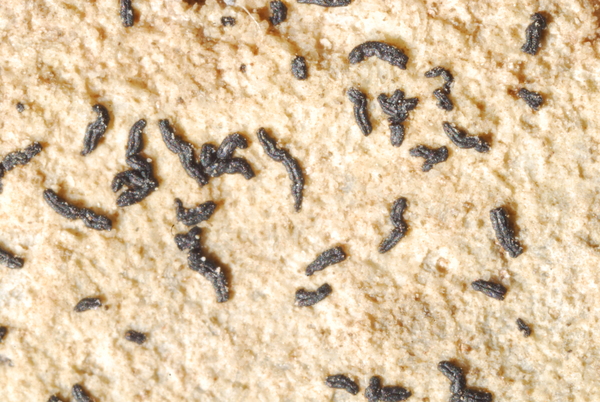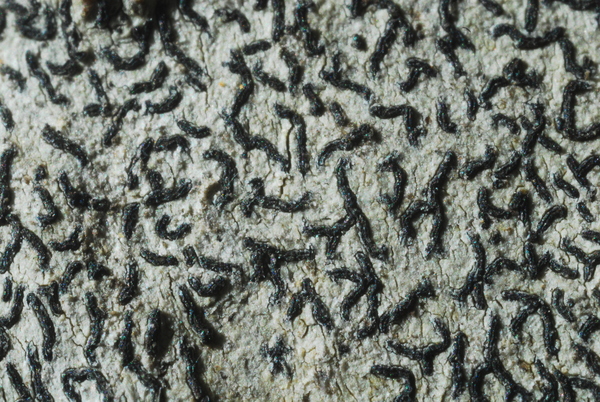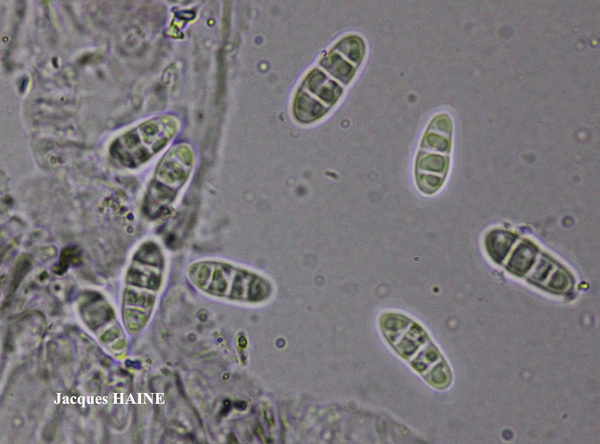Arthonia calcarea (Sm.) Ertz & Diederich
in Ertz & al., Mycol. Res., 113: 146, 2009. Basionym: Opegrapha calcarea Turner ex Sm. in Smith & Sowerby - Engl. Bot., 25: 1790, 1807.
Synonyms: Opegrapha chevallieri Leight.; Opegrapha conferta auct. p.p. non Anzi; Opegrapha confluens auct. non (Ach.) Stizenb.
Distribution: N - VG, Frl (TSB 24287), Ven (Caniglia & al. 1993), TAA, Lomb, Piem (Isocrono & al. 2004), Lig. C - Tosc, Marc (Nimis & Tretiach 1999), Umb (Nimis & Tretiach 1999, Ravera & al. 2006, Panfili 2007), Laz (Nimis & Tretiach 2004), Abr (Nimis & Tretiach 1999, Gheza & al. 2021), Mol (Nimis & Tretiach, 1999, 2004, Caporale & al. 2008, Genovesi & Ravera 2014), Sar. S - Camp (Aprile & al. 2003, 2003b, Nimis & Tretiach 2004, Garofalo & al. 2010), Pugl (Nimis & Tretiach 1999, Durini & Medagli 2002, 2004, Gianfreda & Matino 2020), Bas (Bartoli & Puntillo 1998, Nimis & Tretiach 1999), Cal (Puntillo 1996, Ravera & al. 2022b), Si (Nimis & al. 1994, Grillo & al. 2002, 2009, Grillo & Caniglia 2004, Caniglia & Grillo 2005, 2006, Genco & al. 2007, Gianguzzi & al. 2009).
Description: Thallus crustose, endosubstratic to thinly episubstratic, continuous or finely cracked, whitish to pale grey, sometimes with a pink hue, usually not well-delimited, I+ blue. Apothecia lirelliform, black, epruinose, straight or curved, simple or rarely branched, (0-4)0.8-1.5(-3) x 0.2-0.4 mm, isolated or more commonly forming star-like clusters, projecting from thallus, with a slit-like disc and a black, carbonaceous margin. Proper exciple closed below the hymenium, K+ greenish, the part below the hymenium column-like, usually taller than the upper part; epithecium brown, K+ greenish; hymenium colourless, I+ blue throughout, K/I+ blue, 60-75 µm high; paraphyses much branched, not capitate; hypothecium black. Asci 8-spored, broadly clavate to subglobose, semifissitunicate, Arthonia-type. Ascospores 3-septate with rounded ends, hyaline, (11-)14-20(-21) x (3-)4-5(-6) μm, with a thin, usually poorly visible perispore. Pycnidia black, semi-immersed. Conidia straight, 5-8 x c. 1 µm. Photobiont trentepohlioid. Spot tests: thallus K-, C-, KC-, P-, UV-. Chemistry: without lichen substances.Note: on limestone, brick, roofing tiles, etc. in sheltered situations, the most common calcicolous species of the genus throughout Italy, with a wide altitudinal range. According to Roux & coll. (2014) A. trifurcata is an independent species. Here the species is treated in a broad sense. The synonymisation of Opegrapha conferta Anzi with Gyrographa saxigena by Coppins & al. (2008) has been taken up by several other sources. There is however a lichen which has been frequently called Opegrapha conferta, that belongs to the Arthonia calcarea-group (mentioned as O. conferta auct. by Cannon & al. 2020). If the type of O. conferta Anzi is Gyrographa saxigena, this other lichen has no valid name, and even if the synonymisation were incorrect, that lichen still would have no valid name, since it should be transferred to Arthonia, the epithet conferta conflicting with an already existing Arthonia conferta (Fée) Nyl. (1858).
Growth form: Crustose
Substrata: rocks
Photobiont: Trentepohlia
Reproductive strategy: mainly sexual
Commonnes-rarity: (info)
Alpine belt: absent
Subalpine belt: extremely rare
Oromediterranean belt: extremely rare
Montane belt: rather common
Submediterranean belt: common
Padanian area: extremely rare
Humid submediterranean belt: very common
Humid mediterranean belt: rather common
Dry mediterranean belt: rare

Predictive model
Herbarium samples
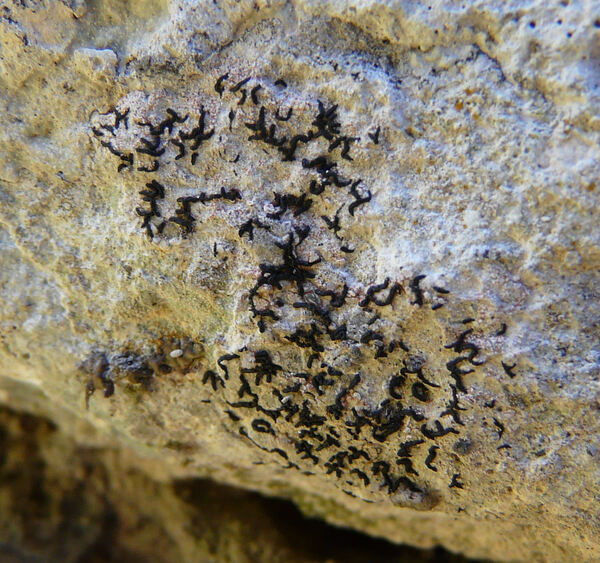

A. Moro; Owner: Department of Life Sciences, University of Trieste
Sicilia, TP, Erice, dintorni della città
2008.04.05
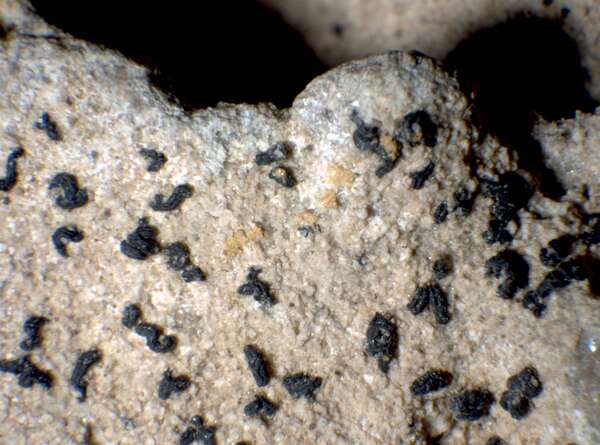

P.L. Nimis; Owner: Department of Life Sciences, University of Trieste
Herbarium: TSB (13485)
2001/11/27
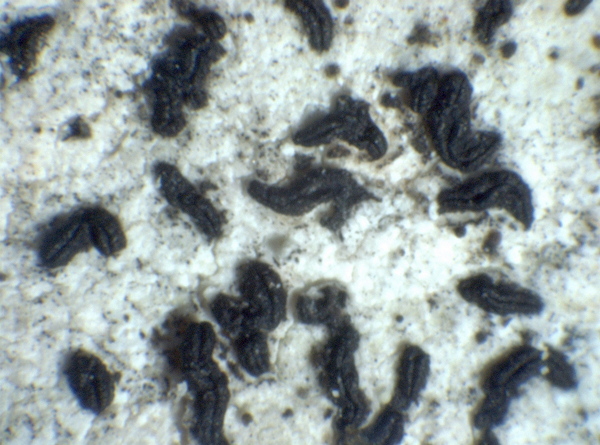

P.L.Nimis; Owner: Department of Life Sciences, University of Trieste
Herbarium: TSB (38281)
2008.02.23
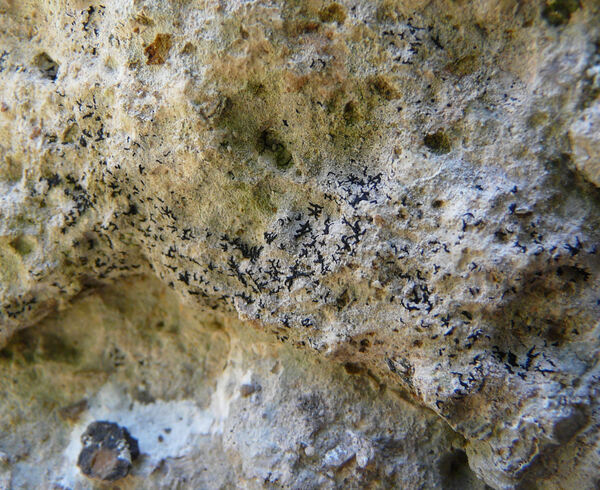

A. Moro; Owner: Department of Life Sciences, University of Trieste
Sicilia, TP, Erice, dintorni della città
2008.04.05
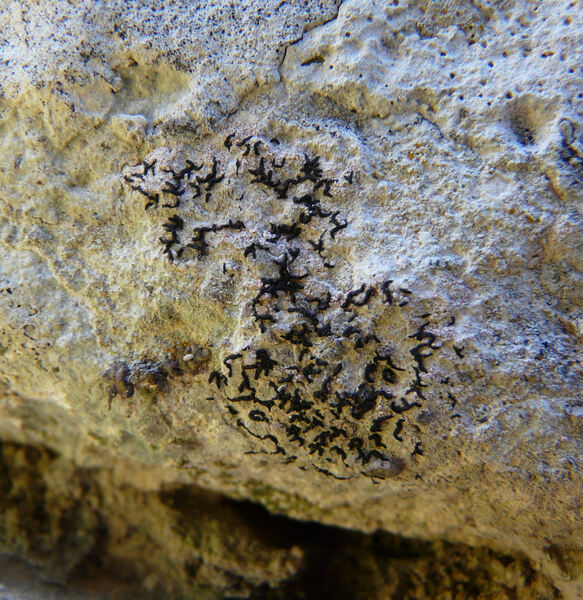

A. Moro; Owner: Department of Life Sciences, University of Trieste
Sicilia, TP, Erice, dintorni della città
2008.04.05
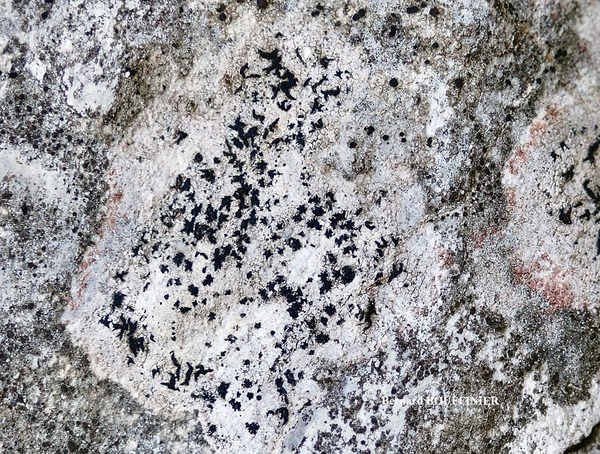
Bernard Bouffinier - Source: http://www.lichensmaritimes.org/index.php?task=fiche&lichen=84&lang=en
France, Corse, Barbagio
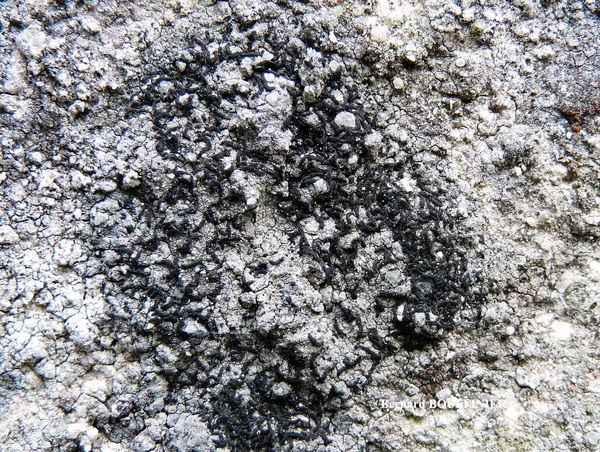
Bernard Bouffinier - Source: http://www.lichensmaritimes.org/index.php?task=fiche&lichen=84&lang=en
France, Mur de Chapelle Camaret
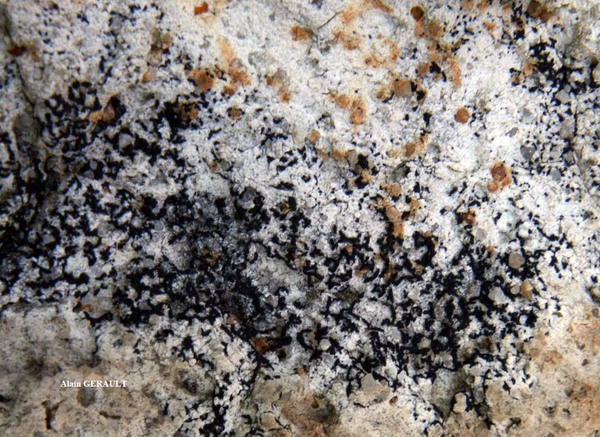
Bernard Bouffinier - Source: http://www.lichensmaritimes.org/index.php?task=fiche&lichen=84&lang=en
France, Plougastel-Daoulas
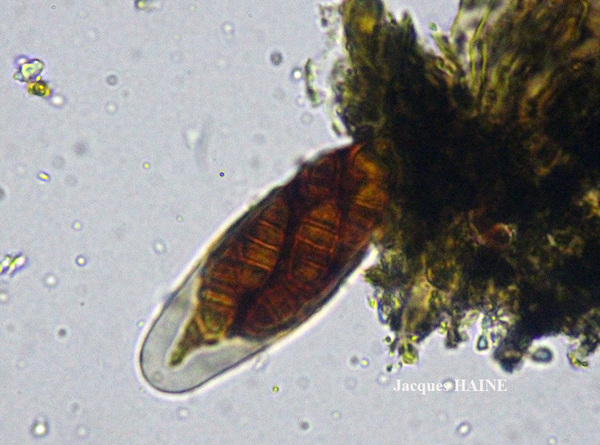
Jacques Haine - Source: http://www.lichensmaritimes.org/index.php?task=fiche&lichen=84&lang=en
France, Crozon

Jacques Haine - Source: http://www.lichensmaritimes.org/index.php?task=fiche&lichen=84&lang=en
France, Crozon
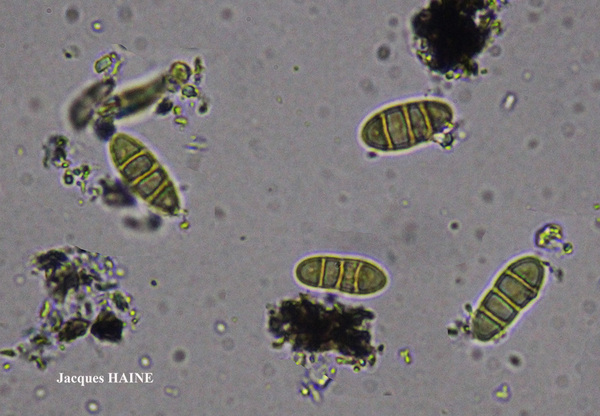
Jacques Haine - Source: http://www.lichensmaritimes.org/index.php?task=fiche&lichen=84&lang=en
France, Crozon
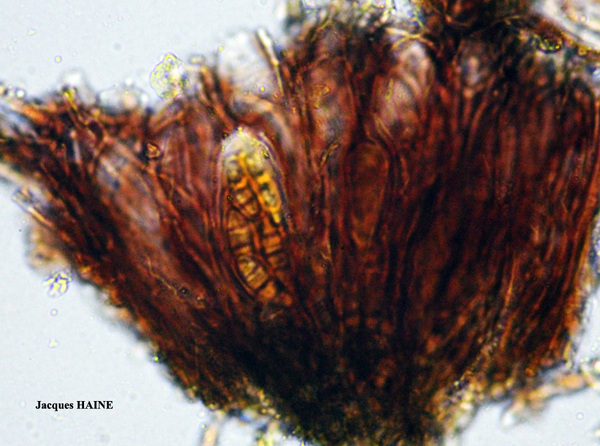
Jacques Haine - Source: http://www.lichensmaritimes.org/index.php?task=fiche&lichen=1053&lang=en
France, Roscanvel
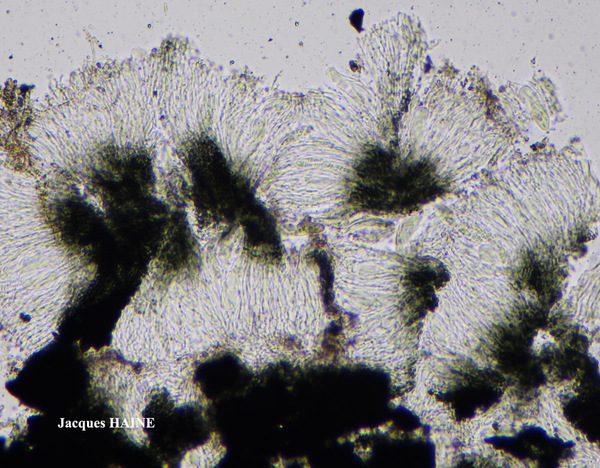
Jacques Haine - Source: http://www.lichensmaritimes.org/index.php?task=fiche&lichen=1053&lang=en
France, Roscanvel
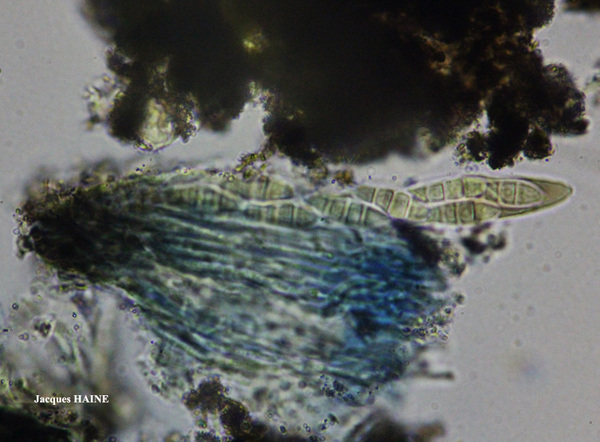
Jacques Haine - Source: http://www.lichensmaritimes.org/index.php?task=fiche&lichen=1053&lang=en
France, Roscanvel
Growth form: Crustose
Substrata: rocks
Photobiont: Trentepohlia
Reproductive strategy: mainly sexual
Commonnes-rarity: (info)
Alpine belt: absent
Subalpine belt: extremely rare
Oromediterranean belt: extremely rare
Montane belt: rather common
Submediterranean belt: common
Padanian area: extremely rare
Humid submediterranean belt: very common
Humid mediterranean belt: rather common
Dry mediterranean belt: rare

Predictive model
| Herbarium samples |


A. Moro; Owner: Department of Life Sciences, University of Trieste
Sicilia, TP, Erice, dintorni della città
2008.04.05


P.L. Nimis; Owner: Department of Life Sciences, University of Trieste
Herbarium: TSB (13485)
2001/11/27


P.L.Nimis; Owner: Department of Life Sciences, University of Trieste
Herbarium: TSB (38281)
2008.02.23


A. Moro; Owner: Department of Life Sciences, University of Trieste
Sicilia, TP, Erice, dintorni della città
2008.04.05


A. Moro; Owner: Department of Life Sciences, University of Trieste
Sicilia, TP, Erice, dintorni della città
2008.04.05

Bernard Bouffinier - Source: http://www.lichensmaritimes.org/index.php?task=fiche&lichen=84&lang=en
France, Corse, Barbagio

Bernard Bouffinier - Source: http://www.lichensmaritimes.org/index.php?task=fiche&lichen=84&lang=en
France, Mur de Chapelle Camaret

Bernard Bouffinier - Source: http://www.lichensmaritimes.org/index.php?task=fiche&lichen=84&lang=en
France, Plougastel-Daoulas

Jacques Haine - Source: http://www.lichensmaritimes.org/index.php?task=fiche&lichen=84&lang=en
France, Crozon

Jacques Haine - Source: http://www.lichensmaritimes.org/index.php?task=fiche&lichen=84&lang=en
France, Crozon

Jacques Haine - Source: http://www.lichensmaritimes.org/index.php?task=fiche&lichen=84&lang=en
France, Crozon

Jacques Haine - Source: http://www.lichensmaritimes.org/index.php?task=fiche&lichen=1053&lang=en
France, Roscanvel

Jacques Haine - Source: http://www.lichensmaritimes.org/index.php?task=fiche&lichen=1053&lang=en
France, Roscanvel

 Index Fungorum
Index Fungorum
 GBIF
GBIF

